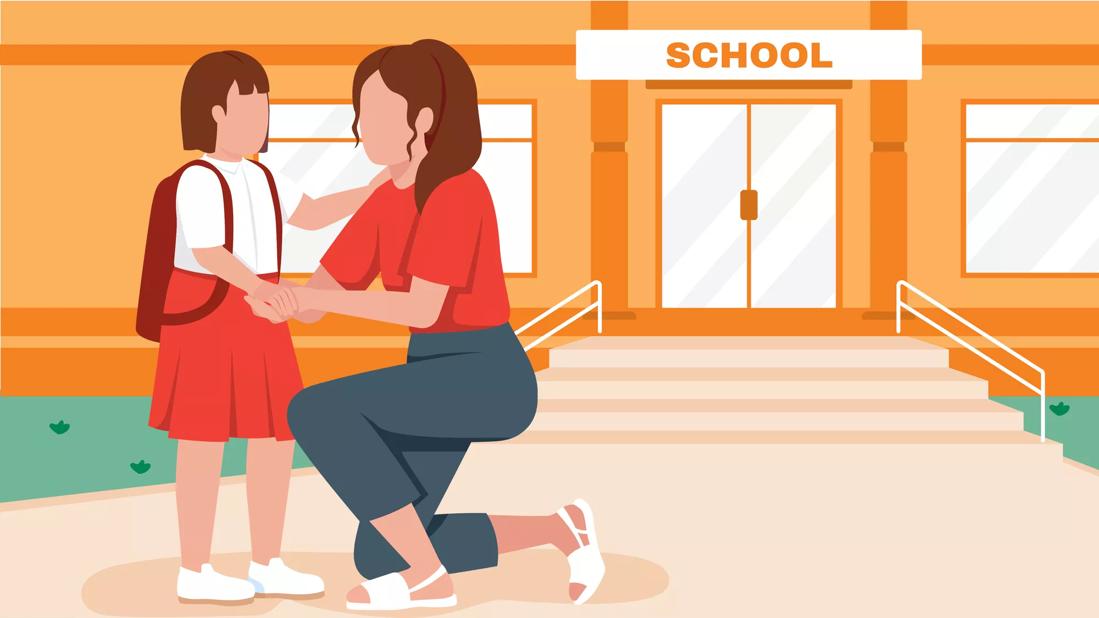Tantrums and meltdowns are normal, but you can help your child manage their bigger emotions

Does your kid seem to have “anger issues”?
Advertisement
Cleveland Clinic is a non-profit academic medical center. Advertising on our site helps support our mission. We do not endorse non-Cleveland Clinic products or services. Policy
If you’re a parent, you’ve probably dealt with your fair share of tantrums, meltdowns and freakouts.
You’ve probably wondered to yourself: Why does my toddler hit me?
Regulating our emotions is a skill we all have to learn, and some kids take longer to master self-control than others. But it can be tricky to know when your child’s aggressive behavior is just part of their learning curve or if it’s getting out of hand.
Pediatric psychologist Emily Mudd, PhD, explains how to manage toddler hitting and other toddler aggression.
Why is my toddler so aggressive?
It helps to understand what’s developmentally appropriate for a child.
“We generally expect toddlers to experience some aggressive behaviors,” shares Dr. Mudd. “At this stage, kids tend to resort to physical expressions of their frustration, simply because they don’t yet have the language skills to express themselves. For example, pushing a peer on the playground could be considered typical. We wouldn’t necessarily call that aggression unless it was part of a pattern.”
Your toddler may feel frustrated because they’re bored, tired, hungry or even overwhelmed — and physical forms of communication like hitting, biting and pushing may be the only way they know how to express their feelings.
Advertisement
By the time your child is old enough to have the verbal skills to communicate their feelings — around age 7 — physical expressions of aggression should taper off, Dr. Mudd says.
If that’s not happening, it’s time to be concerned, especially if your child is putting themselves or others in danger or is regularly damaging property.
Watch for warning signs that your child’s behavior is having a negative impact, like they’re:
“These warning signs are cause for concern and shouldn’t be ignored,” says Dr. Mudd.
Your child’s behavior may have an underlying cause that needs attention. ADHD, anxiety, undiagnosed learning disabilities and autism may have symptoms that appear as aggressive behavior or create challenges with communication.
“Whatever the cause, if the behavior impacts your child’s day-to-day functioning, it’s time to seek professional treatment,” she adds.
Start by talking with your pediatrician. If necessary, they can refer you to a mental health professional to diagnose and treat problems that may cause aggression or trouble with verbal communication.
So, what can you do as a parent to help manage your toddler’s aggressive behavior? Dr. Mudd recommends these strategies.
Are you not sure what to do when your toddler hits you or someone else? The first, and maybe the most important step, is to remain calm and keep your emotions in check.
“When a child is expressing a lot of emotion, and the parents meet that with more emotion, it can increase the child’s aggression,” explains Dr. Mudd. “For example, if a child is yelling, and then the parent begins yelling at the child, this will increase the child’s undesired behaviors rather than reducing them.”
Instead, try to model emotional regulation for your toddler. That means trying to reduce the anger or anxiety you may be feeling in the situation by being aware of your own emotions and engaging in coping skills to decrease the intensity of your emotions.
If your child is having a big emotion and it’s not a safety issue, for example, they want a blue cup instead of a green one, it’s OK to accommodate.
But if it’s something you can’t accommodate, for example, your child is having a big feeling in the grocery store because they want a particular cereal, don’t give in and buy it. This is rewarding and will reinforce the behavior.
Advertisement
“When experiencing a big emotion, help your child identify the emotion. For example, ‘You’re feeling so sad and mad because you really wanted that cereal,’” advises Dr. Mudd.
Never respond with physical force such as spanking, hitting or restraining. Instead, redirect when your child engages in a negative behavior by saying something like, “I have to keep you safe. You can’t hit me, but you can hit the pillow.”
“Set boundaries and then put the child in charge of the next choice,” says Dr. Mudd. “For example, ‘We’re going to leave the grocery store now. Do you want to help me scan the food or carry it to the car?’”
Reward good behavior, even when your child isn’t doing anything out of the ordinary. Make the praise specific.
If playtime is problem-free, say, “I really like how you used your words to communicate with your sibling when you were done playing. You shared a lot today. Great job.”
Treats and prizes aren’t necessary. Recognition and praise are powerful all on their own.
You can do this by talking openly about emotions.
For example, you might say, “I can tell you’re really angry right now.” This validates what your child is feeling and encourages verbal, instead of physical, expression. Opening up the floor for conversation can help them find ways of getting their feelings off their chest in a healthy way.
Advertisement
Do tantrums happen every morning before school? Work on structuring your morning routine. Break down tasks into simple steps, and give time warnings like, “We’re leaving in 10 minutes.” Use a physical timer so your child can watch the time lapse.
Set goals, like making it to school on time four days out of five. Then, reward your child when they meet those goals.
Don’t focus on financial or material goals. Instead, try rewards like half an hour of special time with mom or dad, choosing what the family eats for dinner or selecting what the family watches for movie night. Younger children will need frequent reinforcement.
If you’ve incorporated different methods and techniques and are still struggling with how to get your child to stop hitting or being aggressive, it may be time to talk to your child’s pediatrician.
“Remember that you’re not the only one struggling with your child’s behavior. Your child is struggling, too — and inherently, children want to do well. Pediatric psychologists are skilled at helping children and families solve emotional and behavioral challenges,” encourages Dr. Mudd. “Ask your pediatrician for the names of mental health professionals in your area.”
Advertisement
Learn more about our editorial process.
Advertisement

A glass child is the sibling of someone with special needs — often seen as the easy one, but carrying invisible burdens

Appetite changes, social isolation, repetitive behaviors and more may indicate that your child is struggling

Golden children often deal with perfectionism, low self-esteem and strained relationships as adults

Think of this behavior as a role reversal between parent and child — when a child takes on responsibility that’s not developmentally appropriate for their age

American teens are facing unprecedented rates of depression and suicide, but you can be there to support and help them

Unexplained injuries, mood changes and sudden isolation may be signs your child needs help

Be involved in your kid’s care, but be mindful of boundaries

Look for comfort, fit and a feeling of partnership

Babies can get congested easily, but you can calm their cough by keeping them hydrated, using nasal drops and running a humidifier

Weight loss may cause loose, sagging skin and muscle loss to your rear

Several conditions, like vitiligo and fungal infection, can cause a loss of pigmentation, leading to white spots or patches on your skin